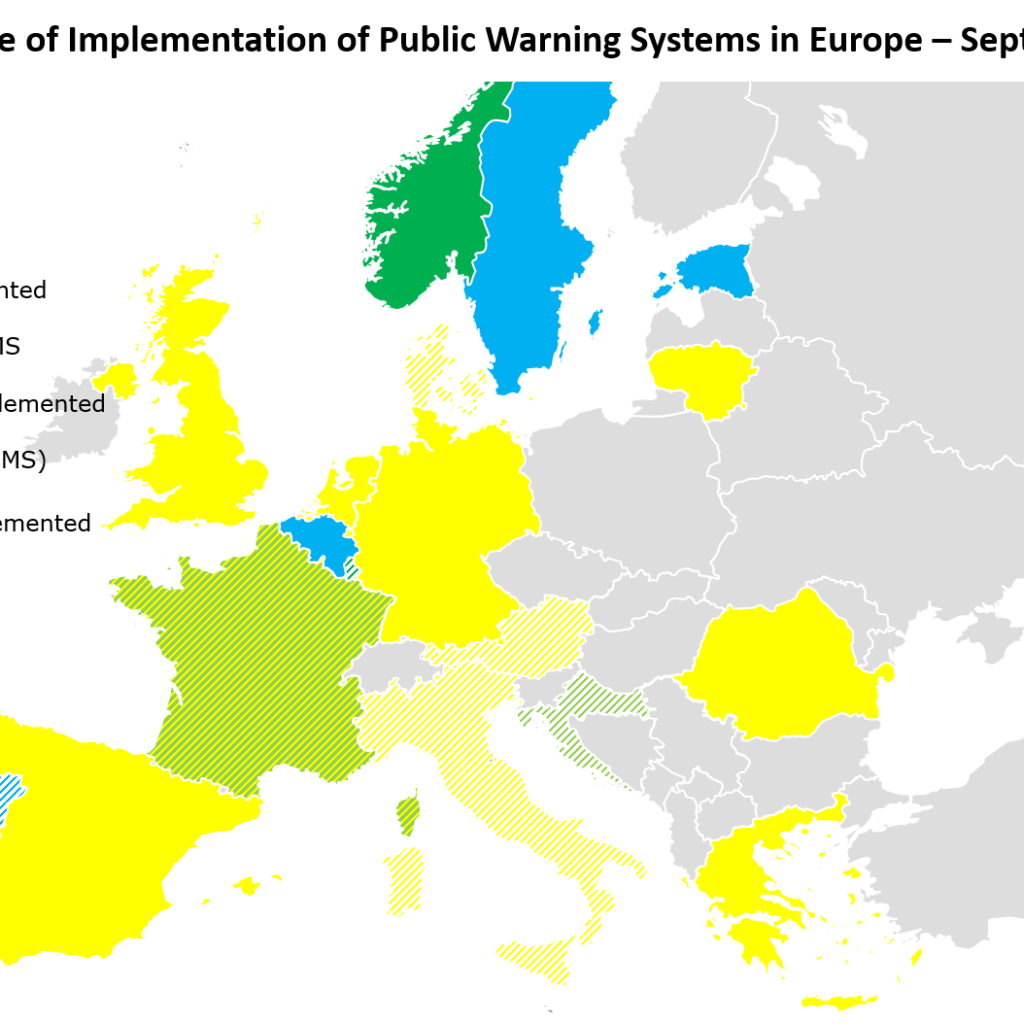Where Are We… With Public Warning?
- Categories: Public warning
In this new series of blogs, we explore the state of play with the main topics in public safety. With rapidly evolving legislation, different stages of implementation across Europe and beyond, it can be difficult to keep up. Where are we in terms of deployment, EU legislation, EENA’s work on the topic and future updates? These blogs will be a one-stop guide for everything you need to know on the current state of the most important topics in public safety. Today, we cover public warning.
What is the Current Situation in Europe?
The need for an effective public warning system is only becoming more obvious as the world battles newer and larger threats – from wildfires to terrorist attacks. And for EU Member States, the deadline for deploying a telephone-based public warning system passed in June 2022.
With a need, and a legal requirement, you may be surprised to know that several European countries have yet to deploy a public warning system that fits the requirements of the legally binding European Electronic Communications Code.
EU Legislation: What Do EU Member States Need to Do?
For public warning, it is less a case of what EU Member States need to do – and much more a case of what they should have done.
The European Electronic Communications Code (EECC) – which was adopted in December 2018 – makes it mandatory for all the Member States of the European Union to implement modern public warning systems. Article 110 mandates EU countries to operate a public warning system that can send geo-targeted emergency alerts to all mobile phones located in the affected area during a natural or man-made disaster. By June 2022, public authorities in all Member States must have been able to send alerts to people’s phones in a determined area. However, many EU Member States have missed this deadline.
So what about the countries that have yet to implement a system? If national authorities fail to properly implement EU laws, the Commission may launch a formal infringement procedure against the country in question. If the issue is still not settled, the Commission may eventually refer the case to the Court of Justice of the European Union.
Where Are We With Implementation?
A list of countries implementing public warning systems as of September 2023 can be found below:

What is EENA doing?
As with all technologies, new developments are improving the service end-users receive. One major problem with current public warning systems is they rely on telecommunications networks – which can be destroyed or disabled during a disaster. In this session from the EENA 2023 Conference, we heard about how satellite can also be used as a mean to ensure the continuity of communication between emergency services and people.
Looking further out than Europe, in 2022, the UN Secretary General announced an ambitious plan “to ensure that every person on Earth is protected by early warning systems within five years”. Vanessa Gray, of the International Telecommunications Union, explained this plan at the EENA 2023 Conference.
We’ve explored the general public reaction to public warning systems and the ways that countries can combat negative perceptions in our blog The End Isn’t Nigh – Why There is Nothing to Fear About Public Warning Systems. And in FR-Alert, a European Reference Combining Cell Broadcast and Location-Based SMS, we break down the implementation and development of the French public warning system – alternatively, see the EENA 2023 session on this here. What other channels can we explore for sending public warning alerts? Check out our panel on the ‘Diversification of Public Warning Channels’.
EENA can respond to any questions you have on public warning, put you in contact with countries who have already implemented systems as well as several vendors, and co-organise events for you to hear from public safety officials and companies. Feel free to contact Benoit Vivier at [email protected].
What Next?
The bottom line is this: the quicker that public warning systems are implemented, the more lives are saved. Countries must not wait for the next disaster to strike before they do so.
Share this blog post on:
